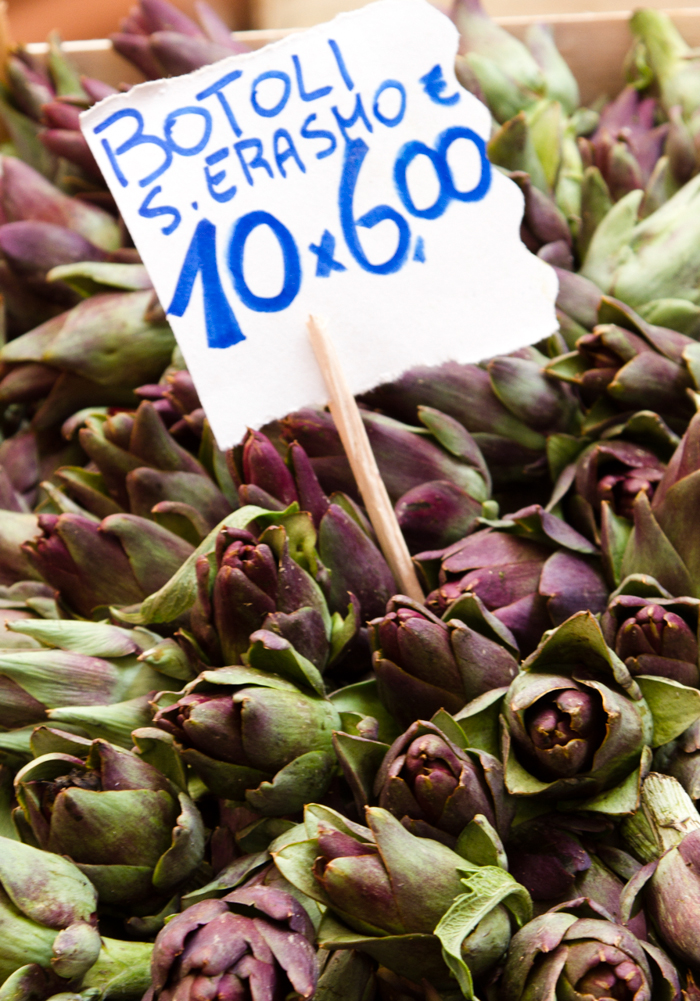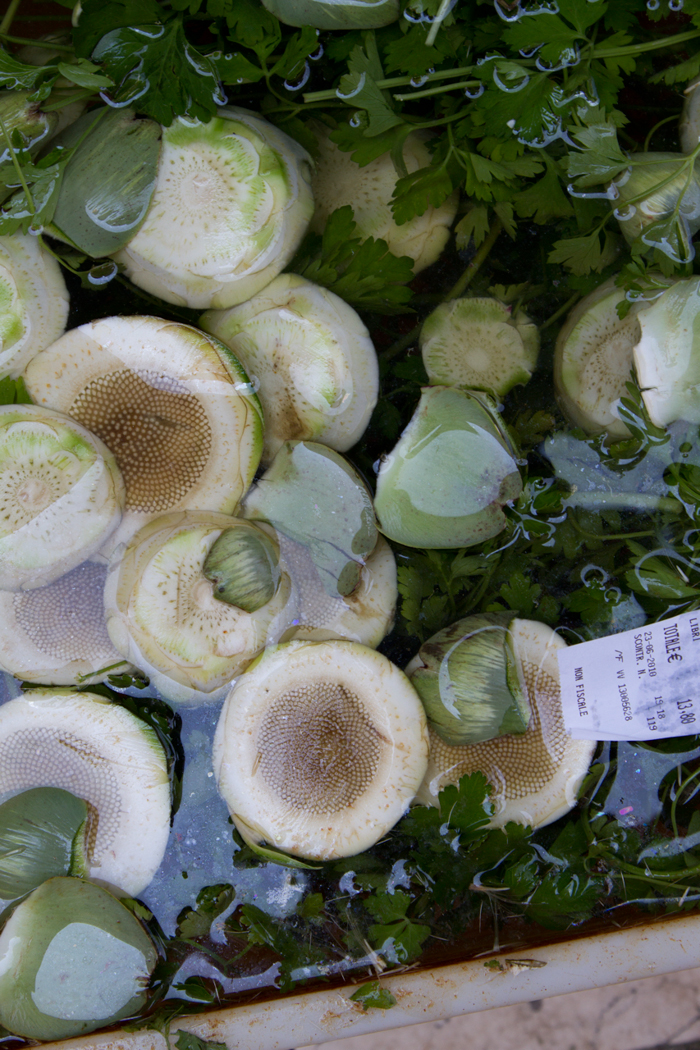Artichokes (in Italian, carciofi) are found in the cuisine throughout Italy, but are not indigenous to the area. There is no real mention of this type of edible plant prior to the twelfth century. Most experts believe at this point that the artichoke was developed from the cardoon by the Arabs, and made its way into Europe in the thirteenth and fourteenth century via Sicily and then Naples.

Today, the artichokes (articiochi in Venetian dialect) cultivated on the small islands around the saline waters of Venetian lagoon are prized by the locals. The islands of Sant’Erasmo and Torcello produce baby violet artichokes, and Sant’Erasmo is also known for a bright yellow variety that are called canarini (canaries).
We eat the developing flower of the artichoke. In the Veneto during the last half of April, the first floral shoots appear, and are cut off to encourage the growth of multiple lower shoots. These first shoots, called castraure (to castrate), are a bit larger and more bitter than the lower shoots, called botoli, but command a premium price as there is only one castraure per artichoke plant, versus multiple botoli.
In markets throughout the Veneto, you will find tubs of artichoke hearts that have been shorn of their leaves (actually, the proper name for the leaves is bracts), the choke removed, and are ready to cook. They are held in acidulated water to keep them from turning brown, and you will often see the shopkeeper trimming artichokes and adding them to the tub between customers. It is a labor intensive process, but a labor of love, as the result is worth it.

To prepare artichoke hearts for cooking:
Lay the artichoke on a cutting board, and using a serrated knife, cut of the top half of the leaves, or bracts. Cut off the stem flush with the bottom of the artichoke and reserve, as you can trim this and eat the center.
Using your hands, peel away the remainder of the bracts from the heart by pulling them away from the center. Continue until you reach the inner leaves, and as you pull these away you will expose the hairy ‘choke’.
Using a pairing knife, cut away the woody green surface of the bottom and sides of the artichoke heart. To trim the sides, I hold the knife in one hand and rotate the heart in the other, similar to peeling an apple. Then scrape out the hairy choke. The best tool I have found for this is a cheap, thin metal spoon. For thick chokes, it is easiest to start from the outside and work your way to the center of the choke.
When you are done, you should have a smooth, somewhat tender, cream colored artichoke heart (and a big bag of scraps.) Take a lemon half and rub it over the heart, squeezing a few drops into the concave top center of the heart. Then place the heart in a bowl of water that has had the juice of a lemon squeezed into it. This will keep your beautiful heart from turning brown. Trim the green woody outer ring from the stem, and add the cream colored stem center to the acidulated water


